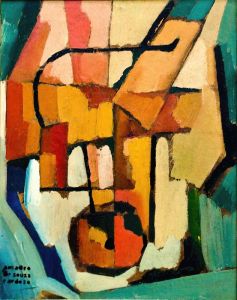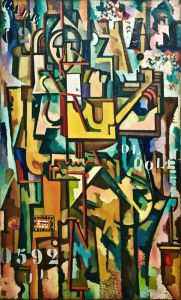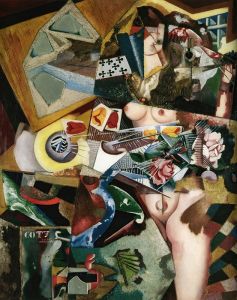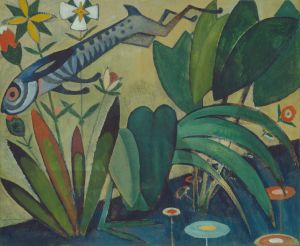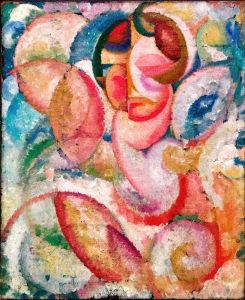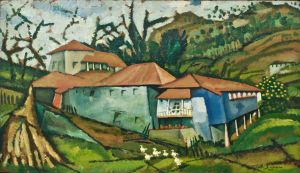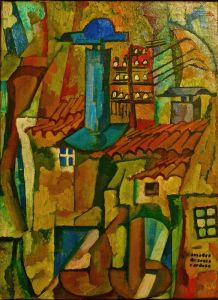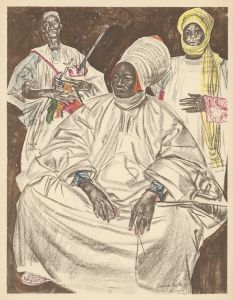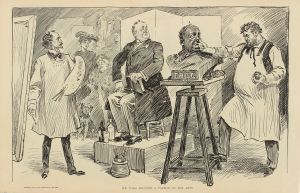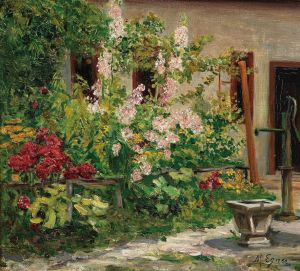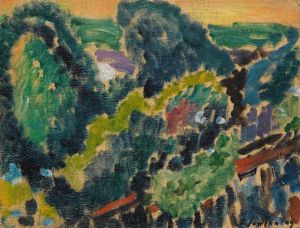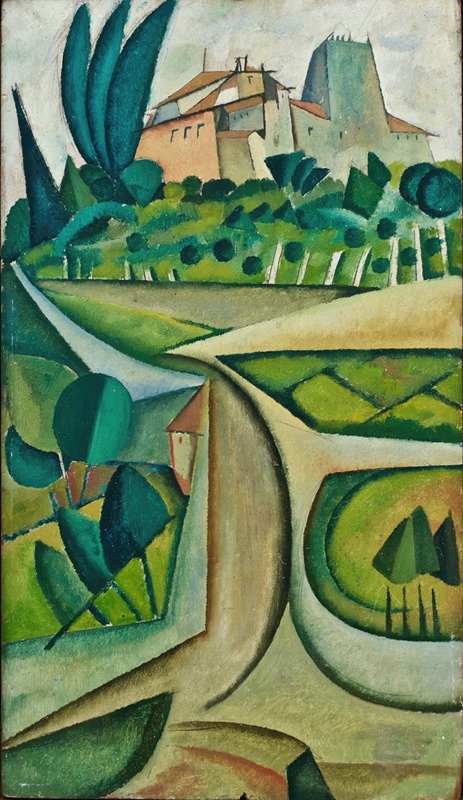
Manhufe Landscape
A hand-painted replica of Amadeo de Souza-Cardoso’s masterpiece Manhufe Landscape, meticulously crafted by professional artists to capture the true essence of the original. Each piece is created with museum-quality canvas and rare mineral pigments, carefully painted by experienced artists with delicate brushstrokes and rich, layered colors to perfectly recreate the texture of the original artwork. Unlike machine-printed reproductions, this hand-painted version brings the painting to life, infused with the artist’s emotions and skill in every stroke. Whether for personal collection or home decoration, it instantly elevates the artistic atmosphere of any space.
Amadeo de Souza-Cardoso (1887–1918) was a Portuguese modernist painter known for his innovative and experimental approach to art. Among his works, Manhufe Landscape is a notable painting that reflects his connection to his homeland and his exploration of modernist aesthetics. The painting is named after Manhufe, a small village in northern Portugal where Souza-Cardoso was born and spent part of his life. This rural setting served as a recurring source of inspiration for the artist, influencing his artistic vision and themes.
Manhufe Landscape exemplifies Souza-Cardoso's ability to merge traditional subjects, such as the Portuguese countryside, with avant-garde techniques. His work often incorporated elements of Cubism, Futurism, and Expressionism, movements that he encountered during his time in Paris, where he was part of a vibrant artistic community. While the exact date of the painting is not definitively documented, it is believed to have been created during the early 20th century, a period when Souza-Cardoso was actively experimenting with form, color, and composition.
The painting captures the essence of the Manhufe region through a modernist lens, using bold colors, dynamic shapes, and fragmented forms to convey the energy and rhythm of the landscape. Souza-Cardoso's approach to depicting nature was not focused on realism but rather on evoking the emotional and sensory experience of the environment. This aligns with his broader artistic philosophy, which sought to break away from traditional conventions and explore new ways of seeing and representing the world.
Amadeo de Souza-Cardoso's career was tragically cut short when he died at the age of 30 during the Spanish flu pandemic in 1918. Despite his relatively brief career, his work has gained recognition for its originality and contribution to modern art. Today, Manhufe Landscape and other works by Souza-Cardoso are celebrated as important examples of early 20th-century Portuguese art. His paintings are held in various collections, including the Museu Nacional de Arte Contemporânea in Lisbon and the Centro de Arte Moderna in Portugal.
Due to limited documentation and the artist's untimely death, specific details about Manhufe Landscape, such as its exact dimensions, medium, and current location, may not be widely available. However, the painting remains an enduring testament to Souza-Cardoso's artistic legacy and his ability to bridge local traditions with international modernist movements.





